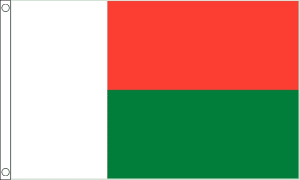Language/Southern-betsimisaraka-malagasy/Culture/Basketry
| ◀️ Lamba — Previous Lesson | Next Lesson — Days of the Week ▶️ |
Introduction[edit | edit source]
In this lesson, we will explore the traditional art of basketry in Southern Betsimisaraka culture. Basketry holds immense cultural significance and plays a vital role in the daily lives of the Betsimisaraka people. We will delve into the techniques, materials, and patterns used in basket weaving, as well as the cultural and historical context that shapes this art form. By the end of this lesson, you will have a deeper understanding of the rich traditions and craftsmanship involved in Southern Betsimisaraka basketry.
Basketry in Southern Betsimisaraka Culture[edit | edit source]
Basketry is an ancient craft that has been passed down through generations in Southern Betsimisaraka culture. It is an integral part of their heritage and serves both functional and decorative purposes. Baskets are used for various tasks such as carrying, storing, and serving food, as well as for ceremonial and religious purposes. The intricate designs and patterns woven into the baskets reflect the cultural identity and artistic expression of the Betsimisaraka people.
Materials[edit | edit source]
The materials used in Southern Betsimisaraka basketry are sourced from the natural environment, reflecting the close relationship between the people and their surroundings. Common materials include raffia palm leaves, bamboo, and various types of vines. These materials are carefully selected and prepared to ensure flexibility and durability. The color palette is derived from natural dyes made from plants, roots, and barks, giving the baskets earthy tones and vibrant hues.
Techniques[edit | edit source]
Southern Betsimisaraka basketry is characterized by its intricate weaving techniques. The artisans employ a variety of weaving patterns, such as twining, coiling, and plaiting, to create unique and visually stunning designs. Twining involves the interlacing of two or more strands of material, while coiling involves wrapping the material around a central core. Plaiting, on the other hand, involves weaving strands of material over and under each other.
Patterns and Symbolism[edit | edit source]
Patterns and symbols play a significant role in Southern Betsimisaraka basketry. Each pattern carries a specific meaning and is often inspired by elements found in nature, such as animals, plants, and celestial bodies. For example, the "tsaona" pattern, which resembles fish scales, symbolizes abundance and fertility. The "tangena" pattern, resembling intertwined snakes, represents protection and spiritual power. These patterns not only add aesthetic value but also convey cultural and spiritual messages.
Regional Variations[edit | edit source]
It is worth noting that basketry techniques and designs may vary across different regions within Southern Betsimisaraka culture. Each region has its unique set of patterns and motifs that reflect the local customs and traditions. For example, the coastal regions may incorporate seashells and marine motifs into their baskets, while the highland regions may feature patterns inspired by the surrounding mountain landscapes. These regional variations add diversity and depth to Southern Betsimisaraka basketry.
Cultural Significance of Basketry[edit | edit source]
Basketry holds immense cultural significance in Southern Betsimisaraka society. It represents the skills, knowledge, and creativity of the artisans who meticulously weave each basket. The art of basketry is often passed down through generations, reinforcing familial and community ties. Baskets are not only functional objects but also serve as symbols of status, wealth, and spiritual beliefs. They are often used in ceremonies, rituals, and everyday activities, connecting the Betsimisaraka people to their cultural roots.
Exercises[edit | edit source]
1. Identify the materials used in Southern Betsimisaraka basketry. Solution: Raffia palm leaves, bamboo, and various types of vines.
2. Explain the twining technique in Southern Betsimisaraka basket weaving. Solution: The twining technique involves the interlacing of two or more strands of material.
3. Match the following patterns with their meanings:
- "tsaona" pattern - "tangena" pattern
Solution:
- "tsaona" pattern: Symbolizes abundance and fertility. - "tangena" pattern: Represents protection and spiritual power.
4. Discuss the regional variations in Southern Betsimisaraka basketry. Solution: Southern Betsimisaraka basketry exhibits regional variations in terms of techniques, materials, and patterns used. Coastal regions may incorporate seashells and marine motifs, while highland regions may feature patterns inspired by mountain landscapes.
Conclusion[edit | edit source]
Basketry is a cherished art form in Southern Betsimisaraka culture, reflecting the deep-rooted traditions and creativity of the Betsimisaraka people. The intricate weaving techniques, natural materials, and symbolic patterns all contribute to the cultural significance of basketry. By understanding the techniques and symbolism behind Southern Betsimisaraka basketry, we gain insight into the rich heritage and artistic expression of this vibrant culture.
Other Lessons[edit | edit source]
- Madagascar Timeline
- Celebrations and Festivals
- Ancestors and Ancestral Worship
- Religious Celebrations
- Musical Instruments
- Fady (Taboos)
- Drinks and Beverages
- Local Cuisine
- Lamba
Template:Southern-betsimisaraka-malagasy-Page-Bottom
| ◀️ Lamba — Previous Lesson | Next Lesson — Days of the Week ▶️ |

